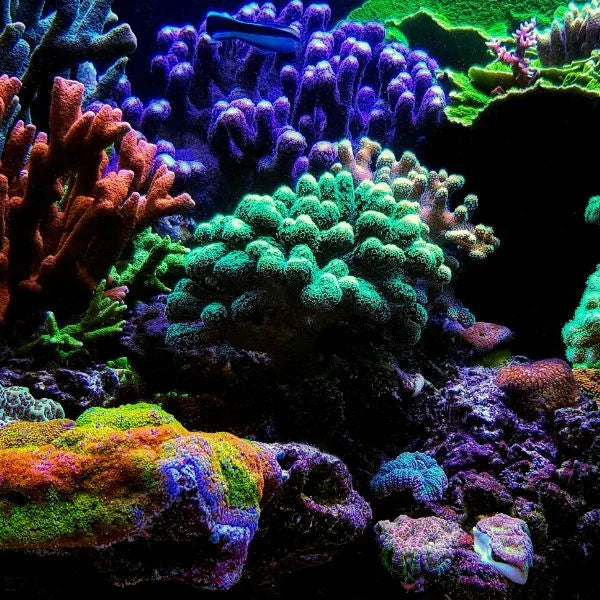
Boosting Coral Health: How to Add Ozone to Your SPS Reef Tank
Share
Why Use Ozone in Your SPS Reef Tank?
Ozone, a highly reactive form of oxygen, is a powerful tool in the reef tank hobbyist's arsenal. While not essential for maintaining a basic reef tank, ozone can dramatically enhance the health and vibrancy of your corals, particularly demanding SPS (Small Polyp Stony) corals.
Here's why ozone is beneficial:
- Enhanced Water Clarity: Ozone effectively eliminates dissolved organic compounds (DOCs) and other pollutants, resulting in crystal-clear water.
- Improved Coral Health: Clearer water allows more light to penetrate, promoting coral growth and coloration. Ozone also reduces the risk of bacterial infections, leading to healthier corals.
- Reduced Nutrient Levels: Ozone breaks down harmful nutrients like nitrates and phosphates, contributing to a more stable reef environment.
- Reduced Algae Growth: By targeting DOCs and nutrients, ozone helps control unwanted algae growth, providing a more balanced ecosystem.
Understanding Ozone Generators
Ozone generators create ozone gas by passing oxygen through an electrical field. The ozone is then introduced into your reef tank through a diffuser, where it reacts with water and breaks down pollutants.
Choosing the Right Ozone Generator
The right ozone generator size depends on your tank's volume and the desired level of ozone output.
- Tank Size: Consider your tank's total water volume.
- Coral Type: SPS corals require higher ozone levels than LPS or soft corals.
- Water Flow: Ensure adequate water flow through the ozone diffuser for optimal distribution.
Setting Up an Ozone System
Here's a step-by-step guide to setting up your ozone system:
- Install the Ozone Generator: Place the generator in a well-ventilated area, away from any heat sources.
- Connect the Air Pump: Connect an air pump to the ozone generator for air supply.
- Install the Ozone Diffuser: Position the diffuser in your sump or refugium, ensuring adequate water flow.
- Connect the Ozone Line: Use ozone-resistant tubing to connect the generator to the diffuser.
- Calibrate the Ozone Output: Use an ozone monitor to calibrate the ozone output to the appropriate level for your tank size.
Safety Precautions
Ozone is a powerful oxidizer and can be harmful if handled improperly. Always follow these safety measures:
- Ventilation: Ensure adequate ventilation in the room where the ozone generator is placed.
- Safety Glasses and Gloves: Wear protective gear when handling ozone equipment.
- Regular Maintenance: Clean and inspect the ozone generator and diffuser regularly.
Monitoring Ozone Levels
Regularly monitor ozone levels in your tank using an ozone monitor. High ozone levels can be harmful to marine life. Aim for a dissolved ozone level of 0.05-0.1 ppm in your tank.
Conclusion
Adding ozone to your SPS reef tank can significantly improve water clarity, promote coral health, and enhance overall reef ecosystem stability. By following these guidelines and taking necessary safety precautions, you can harness the power of ozone to create a thriving reef environment.
